Cheel are Lilva ni kadhi is a fantastic winter delicacy that should never be missed if you can lay your hands on Cheel a wild green or a weed that grows along wheat. This particular preparations heroes Cheel in the most soul satisfying manner. Since past few months Purvi and I have been talking a lot about weeds. And it felt appropriate to request her to throw some light on weeds, its importance and how we have moved away from these nutritious yet neglected greens of our region.
Purvi writes…
“What is a weed? A plant whose virtues have not been discovered” – Ralph Waldo Emerson. In our modern times, it means plants that we have forgotten the virtues of.
Urban Indian diets have become largely homogenous relying on what is available in the market. The market availability is dependent on ease of growing and commercial viability of the produce. Nutrition and diversity rarely comes into the picture when crops are grown.
In rural India however, edible weeds are still part of people’s lives as they are in some or the other way connected to farming and the natural world. They are not only consumed seasonally but savored and waited for with anticipation.
Weeds can be either annual or season. Weeds like purslane, dandelion can be annual and local variety of Cheel/Bathua is a winter variety growing alongside wheat. It is believed that weeds are a fantastic source of enzymes, vitamins, minerals, antioxidants, essential fatty acids and fibre. They help boost the immune system, maintain the correct pH balance in the body.
Some edible weeds are believed to be very high in phytonutrients and phytochemicals such as beta-carotene that help protect the body against disease, as well as vitamin A, vitamin C, and minerals such as potassium. Because they haven’t been bred the way commercial crops have been bred, they actually do seem to have higher concentrations of their natural vitamins, and minerals and phytonutrients.
I believe there are many reasons the why the edible weeds have slowly disappeared from our plates. One is the increase in monocultures leading to an increase in the use of weedicide. Second edible weeds have to be foraged for consumption and there is a lack of time and enthusiasm in doing so. Thirdly and the most important factor is the loss of knowledge in identification and value of these weeds.
In the last few years a growing interest in weed foraging has seen “edible weed tours and cookouts” spring up regularly. One of the most interesting thing about foraging is, it’s like having a new set of eyes around food. One see’s food in all different places that one wouldn’t have otherwise anticipated. It adds a way to be more creative in the kitchen.
In order to forage for edible weeds safely, you need to be very sure that the weeds you are picking are what you think they are. To learn what is edible and what’s not, you need to do your research. Reading a book on edible weeds, taking an edible weeds tour or studying online sources are good places to start.”
Honestly, I haven’t been exposed to this green ever, we ate suva/dill, tandaljo/tandalya/amranth spinach, Looni ni Bhaji/ purslane greens however, I don’t remember Cheel arriving into our kitchen ever. It is a wild green and mostly teamed with dal or veggies or salads.
This winter Purvi shared a huge bunch of farm fresh Cheel with me along with a recipe of one of her favourite foods made using this green – Cheel ane Lilva ni Kadhi. What came next is a telephonic conversation where in Vasudha auntie walks me through her method of making this rustic preparation. The sound of it was so terrific that I knew I had to make it while the season lasts. The Kadhi makes a fabulous one pot subzi-kadhi that just requires a rotli or rotla to go along. The recipe is pretty simple and the pictures in the trailing video will explain the method of making it.
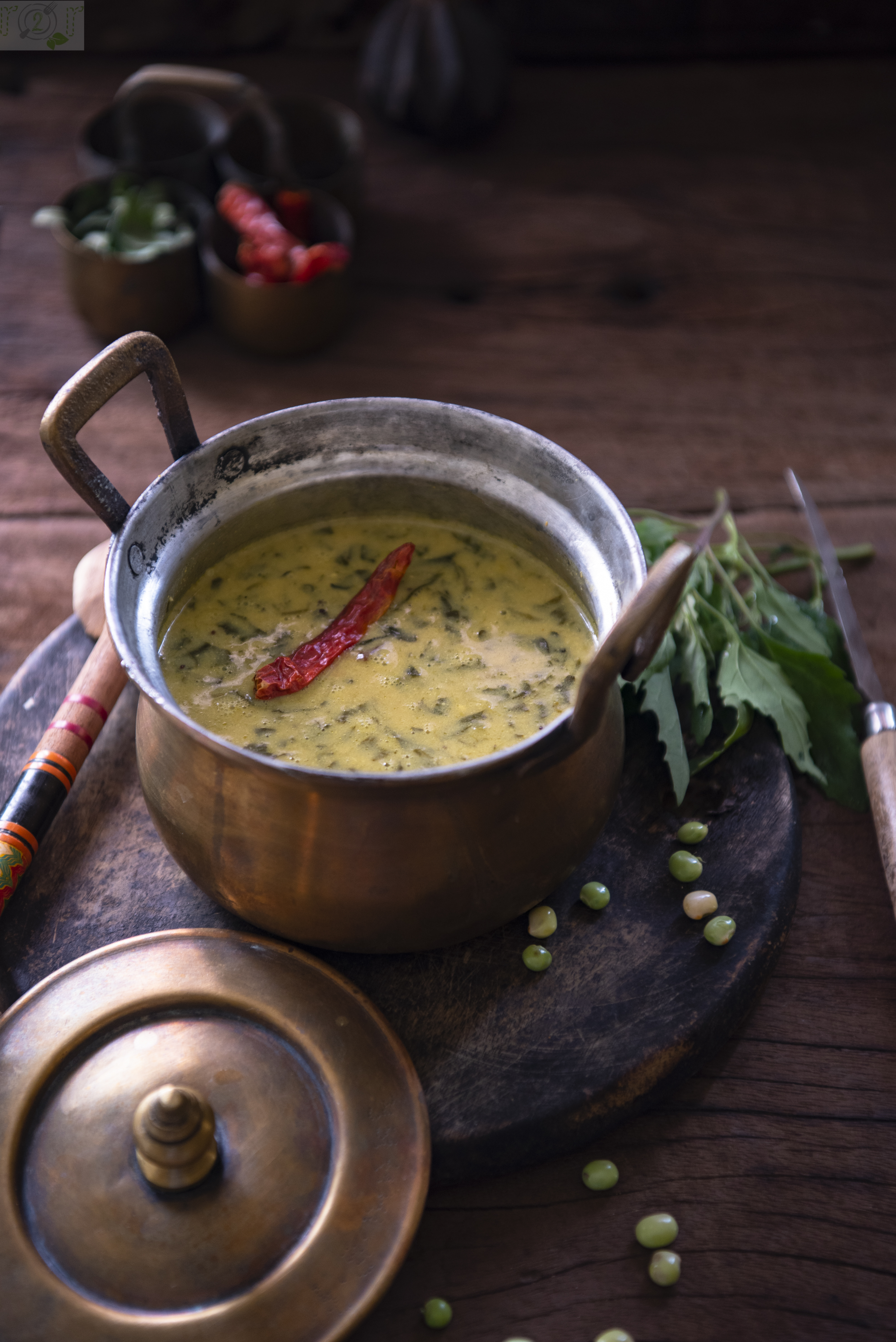
Cheel ne Tuver na Lilva ni Kadhi
Ingredients
- 4 cups of kadhi ( read note)
- 3-4 tablespoons green garlic, green chilies, ginger - freshly pounded
- 1/2 cup tuver na lilva/ fresh pigeon peas, green and tender ones
- 1 bunch Cheel greens, picked, washed and chopped
- 1 tablespoon oil, I used sesame oil
- 1/2 teaspoon mustard seeds
- 1/2 teaspoon turmeric/haldi powder
- a pinch of hing
- salt to taste ( remember kadhi will also have salt)
Instructions
In a kadhai, heat the oil, add mustard seeds, hing/asafoetida and pounded green mix.
Add the turmeric and the lilva.
Mix well, add salt.
Add a little water to cook the Lilva, or cover and cook with the water in the lead. This will help reverse steam the Lilva.
Once the the Lilva cook add the chopped Cheel leaves. Stir well.
Cook until the leaves have wilted and cooked. Takes 2-3 minutes.
Now pour in the cooked kadhi. Mix it all up.
Let the Cheel Lilva ni kadhi simmer so that the flavours combine.
Sever hot with any millet flatbread or white corn flat bread.
Notes
Prepare the kadhi as you would, a little thick, add jaggery instead of sugar and a little more of methi seeds in tempering.

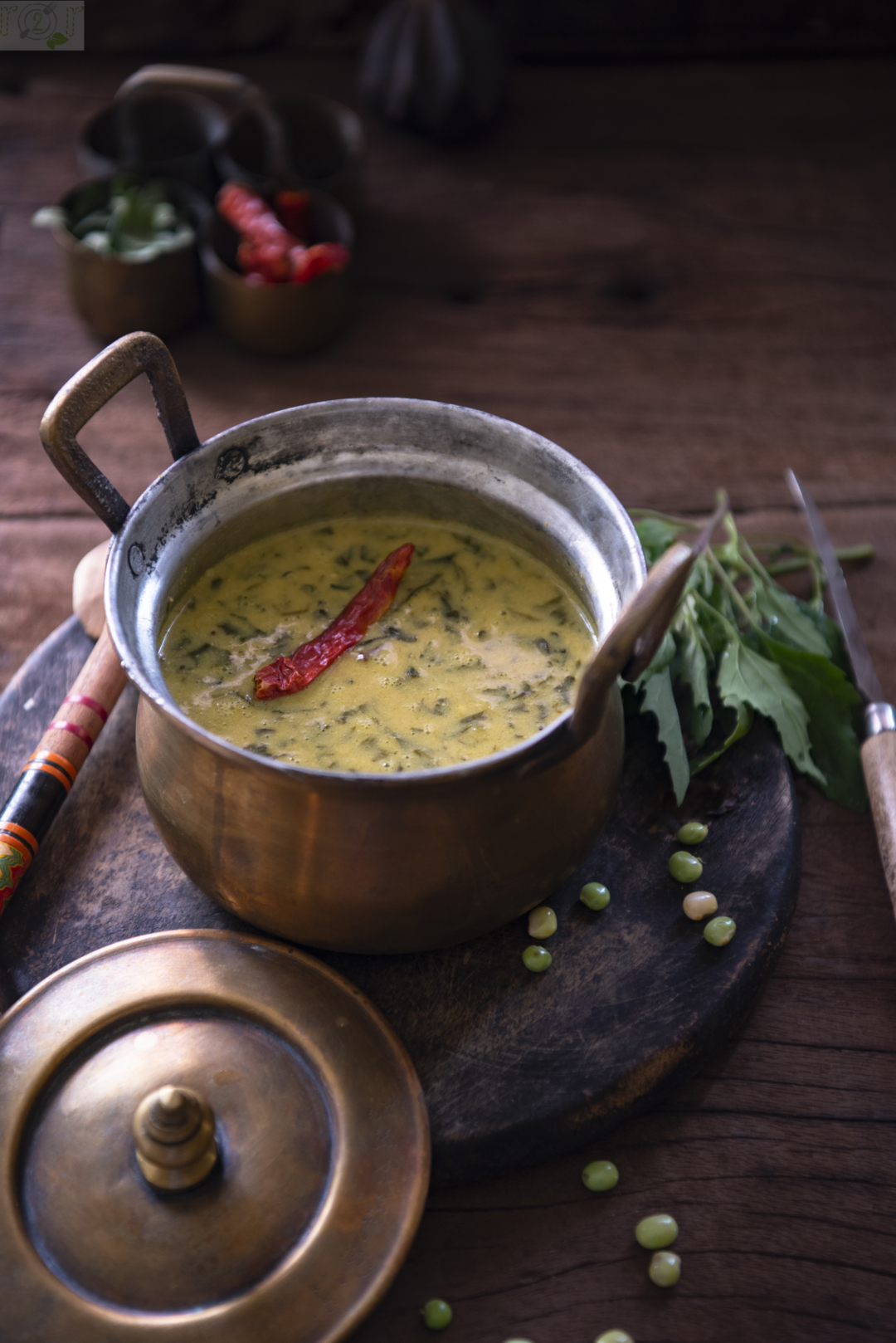

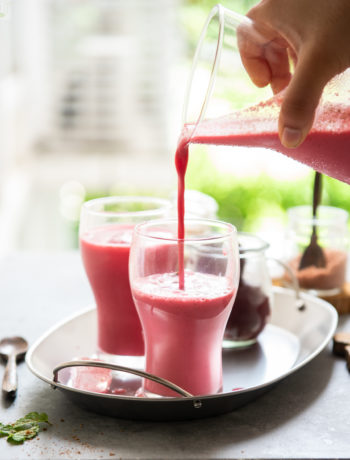
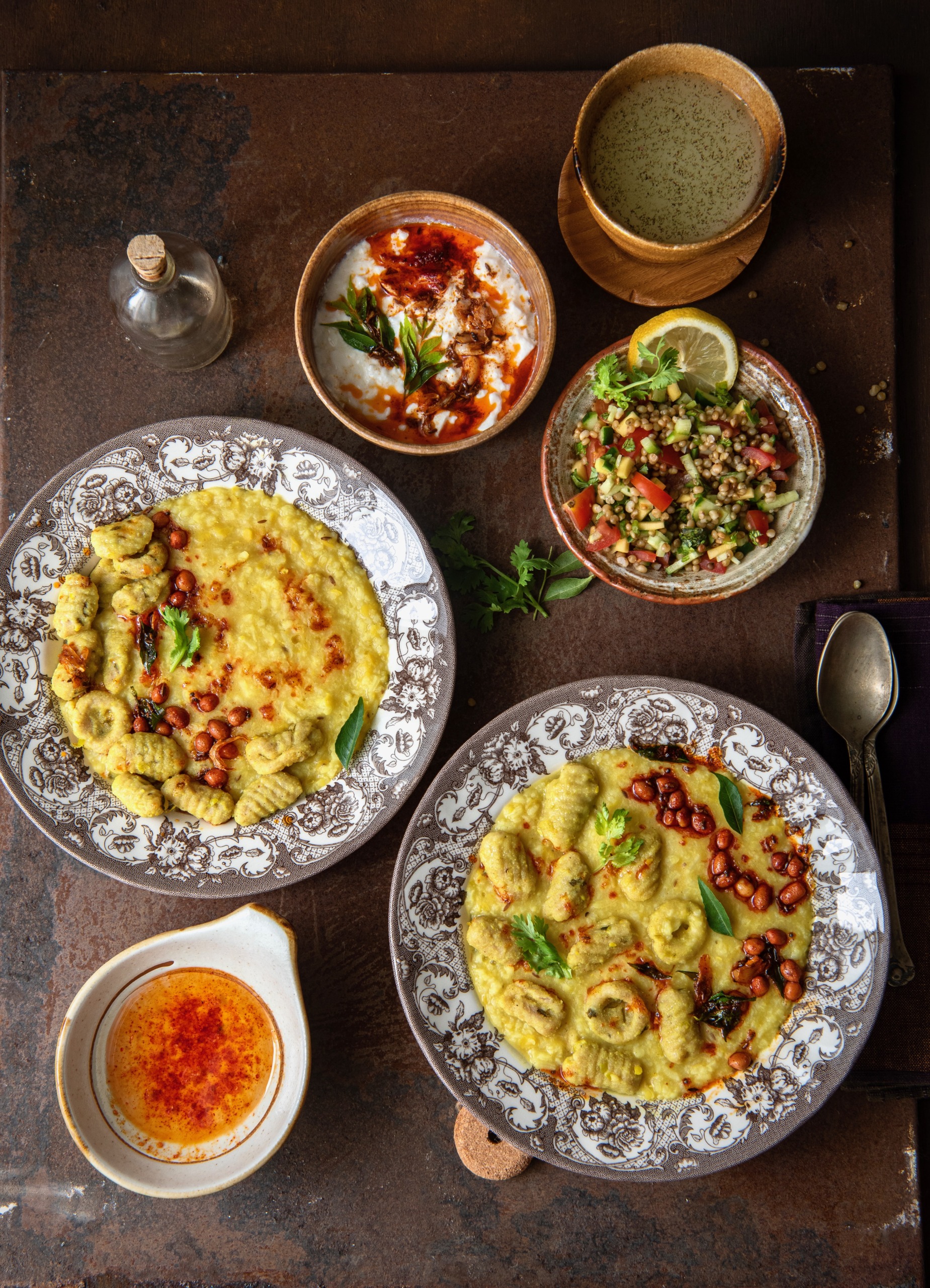
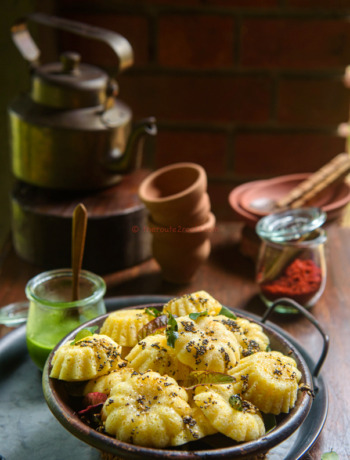
No Comments